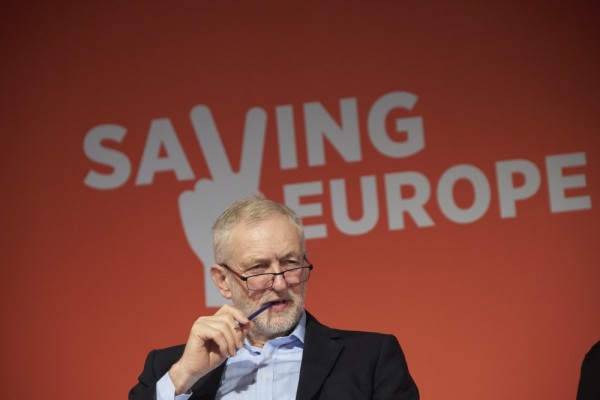Organized Labour and New Social Media
#NeedsImprovement
There is little doubt that the Internet has changed our lives. More specifically, the rise of New Social Media (NSM) on the Internet, most notably Facebook and Twitter, have allowed Canadians to connect with one another in ways previously unimaginable. The exact number of Canadian users vary from source-to-source, but estimates consistently rank Canadians as world leaders in adopting Facebook, with almost 85 percent of Canadian Internet users now visiting the social networking site (upwards of 16.5 million people). Recent figures also show that Canadians are quickly taking to the micro-blogging site Twitter, with some reports showing that nearly 50% of Canadian Internet users utilize Twitter. In both cases, the percentage of Canadians using NSM is higher than the percentage of Americans using NSM. Regardless of the exact numbers and percentages, it is fair to say that Canadians are increasingly using NSM for personal and professional networking. But what does this mean for organized labour?
NSM offers a new and innovative way for unions to connect with existing members for the purposes of mobilization and education. It also allows unions to connect with perspective members, fellow unionists, progressive-minded Canadians, and offers the opportunity to reach a broader demographic that is either ambivalent toward unionism or outright unsupportive of it. These networking possibilities offer unions the potential to connect with and solidify an already supportive audience, but effective use of NSM also allows unions to put forward a counterweight to the conservative, mainstream media. Importantly, NSM also offers an innovative, and perhaps even essential, way to connect with young workers- both unionized and unorganized. A recent report by the British-based Union Solidarity International on Brazilian unions’ effective use of NSM found that “new media influences the ideas workers hold, and counteracts a lot of the negative propaganda in the media.” In short, the opportunities for positive engagement are endless. Most unions in Canada, it seems, are aware of this fact. The question, then, is how effectively are unions using NSM in their overall communication strategy?
| Union | Members (000s) | Twitter Followers | Twitter% | Facebook Likes | Facebook % |
| CUPE | 612 | 4429 | .72 | 5262 | .86 |
| UFCW | 340 | 1725 | .51 | 3862 | 1.14 |
| USW | 245 | n/a | n/a | 231 | .09 |
| PSAC | 192 | 3696 | 1.92 | 4499 | 2.34 |
| CAW | 192 | 899 | .47 | 1066 | 0.56 |
| OPSEU | 130 | 3540 | 2.72 | 2409 | 1.85 |
| CEP | 115 | 1745 | 1.52 | 75 | 75 |
| Teamsters | 114 | 924 | .81 | 199 | .07 |
| AUPE | 79 | 695 | .88 | 957 | .17 |
| ETFO | 73 | 5836 | 7.96 | 5196 | 7.09 |
In much the same way that political scientist Tamara Small has found that Canadian politicians are underutilizing NSM as a part of their broader political communication strategy, the same can be said of the Canadian labour movement. The above chart lists ten of the largest unions in English-speaking Canada, ranked by total membership, as well as the number of Twitter ‘followers’ and Facebook ‘likes’ of each union (as of February 11, 2012). A separate column lists the percentage of each union’s total membership that ‘follows’ or ‘likes’ them.
The data certainly suggests an unequal use of NSM: some unions use it more than others and some unions more effectively than others, at least in terms of having a larger reach and more expansive network. The Facebook-Twitter split is relatively even, with 23 479 total Twitter ‘followers’ and 23 756 total Facebook ‘likes.’ The data also suggests that public-sector unions tend to have a wider network than their private-sector counterparts. What is noticeable, however, is the limited reach of all the unions in terms of how many of their members ‘follow’ or ‘like’ them. The ETFO, likely because of recent labour unrest in Ontario, has an especially wide reach compared to the other unions, though it is likely than many ‘followers’ include parents of elementary school-aged children. While it can be assumed that many people who either follow or like a union includes more than just dues-paying members, the fact remains that the reach over NSM for each of these unions in underwhelming, and that unions could use NSM more effectively for many of the important networking possibilities previously mentioned. Of course, the ‘numbers game’ only tells part of the story. If that were the case, Jack Layton would have become Prime Minister in 2008, having more ‘followers’ and ‘likes’ than Stephen Harper. Likewise, in 2011, he had more ‘likes’ on Facebook than did Stephen Harper. In short, the number of ‘followers’ or ‘likes’ is not necessarily indicative of success. For unions, however, NSM is not about winning an election (although it may be useful in mobilizing support leading up to a certification vote). As noted above, the power of NSM for unions is about mobilizing members, educating the public, managing and sharing a message, and acting as a counterbalance to the conservative, mainstream media. It is about reaching existing members and connecting with new ones. It is certainly about engaging young workers, and likely about much more. For all of these goals, the numbers is game is essential: the larger the network, the larger the reach. A union is in a much better position to effectively use the networking possibilities offered by NSM and harness its true potential if it has wider network: more ‘followers’ and more ‘likes.’ While unions are likely not in position to have the NSM presence as someone like Barack Obama (over 27 million Twitter ‘followers’ and over 35 million Facebook ‘likes’) or pop-star Justin Bieber (over 34 million Twitter ‘followers’ and over 51 million Facebook ‘likes’), they need to do much more to more effectively integrate NSM into their overall communication strategy. That said, the labour news aggregation site Labour Start has an estimated monthly reach of over 700 000, and roughly 100 000 of those are Canadian. This suggests that Canadian union supporters can have a strong on-line presence.
The suggestion here isn’t that NSM can—or should—replace existing mediums of communication, including face-to-face discussions with shop stewards, the phone tree, the union newsletter, the e-mail list, or the break-room bulletin board. After all, the sit-down strikes of the 1930s and 1940s, the strike wave of the 1970s, the Ontario Days of Action in the mid-to-late 1990s, and many other widespread and highly successful forms of collective action occurred prior to the existence of NSM. Despite that, unions should not overlook NSM or downplay its potential. It offers significant networking possibilities, and unions would be foolish to not incorporate them into their overall messaging and communication strategy. As Union Solidarity International has noted of the Brazilian unions’ approach to NSM, it “is used to enhance the unions’ communication, and is not seen as a replacement for branch meetings and newsletters. However, using e-mail, text messaging, Twitter and Facebook has enabled them to reach more people and give members a voice.” Canadian unions would be wise to follow the lead of their Brazilian counterparts and improve their presence and effectiveness on NSM. But how? As Internet-labour guru Derek Blackadder has noted, “we need to be reminded not just of the great things we’re doing, but the ways in which we’re falling behind.”
Where are Canadian unions falling behind? In a 2011 article in Our Times, Blackadder identified ten things for unions to keep in mind to have an effective web-presence. Two of these suggestions were “keep your website fresh” and “update social media regularly.” While unions generally keep their home pages updated (with some exceptions), the importance of routine and frequent Facebook and Twitter updates needs to be underscored. It is an area that some unions are struggling with. The CAW, for example, has not updated its Twitter main page since June 2009, and LIUNA launched its Twitter account in November 2012, but has not updated it since. As Blackadder has noted “a stale website means a stale union,” and when unions don’t update their NSM sites, people wrongly assume that “the conclusion is obvious: nothing is happening.” While the truth is that many important things are happening with both these unions, their lack of a Twitter presence represents a missed opportunity for networking, mobilizing, and educating.
In addition to keeping NSM sites (and traditional websites) fresh and updated with content, it is also important that unions update them with the ‘right’ type of content. Tamara Small and other political scientists have been critical of political parties and candidates for using their NSM as an “information dump.” What is meant by this term is that content posted on a traditional website or sent out in a press release is simply re-posted to Facebook or Twitter. While these ‘official’ releases are surely important, and offer some expanded reach, unions can do much more in terms of content on NSM. General posts by the union outside of the ‘official’ news release, a running commentary on issues of the day, and retweeting or sharing stories posted by progressive allies and rank-and-file members are all ways that unions can build their online profile. So too are posting and sharing YouTube videos and memes (pictures with clever or comedic text, prounced ‘meems’), and these are especially appealing to young workers. Regularly updated and innovative content is essential for gaining a presence in the world of NSM. Some unions are doing this better than others, and more work needs to be done in this area. CUPE and PSAC, however, are excellent examples of unions effectively utilizing NSM. In addition to frequently updated content, at CUPE’s recent national bargaining conference, the #nego2013 hashtag offered rank-and-file members, CUPE staff, CUPE leadership, and other labour-friendly allies at the conference and elsewhere across Canada to participate in the discussion and connect with one another around an important issue.
A major part of NSM’s value lays in its ability to generate two-way communication, a vital link between unions and rank-and-file members. One of Small’s criticisms of Canadian politicians is the degree to which their NSM strategy involves one-way communication from above (union officials), and in so doing excludes much of the potential of NSM. While organizations often prefer the one-way communication method to avoid getting tough questions or public criticisms, NSM, used properly can effectively negate the fear of anti-union approaches hijacking the page. Effective two-way communication also provides a meaningful link between members and their unions, and allows a forum for an important discussion of issues facing the labour movement. As Blackadder aptly noted: “Don’t be afraid of public interaction.” While unions often use NSM to post stories – seeing Twitter’s ‘home’ page and the Facebook ‘newsfeed’ as useful tools – tools such as Twitter’s ‘connect’ are important. Responding to queries from members, generating discussion, and providing a venue for dialogue on issues important to rank-and-file members is essential to an effective NSM strategy.
NSM also allows unions the ability to ‘follow’ or befriend rank-and-file members and other progressive allies. Commenting on their stories, retweeting or sharing their posts, and tagging them in photos or relevant new stories provides a meaningful connection that can engage and energize members. While this certainly takes time and effort, the potential payoff is important. NSM not only members the ability to connect with their unions, it also offers unions the ability to connect with their members. This two-way communication is often overlooked, yet vital to harness the full potential of NSM.
As telling example of the potential of NSM as part of a broader communication strategy is the success of the demonstration on January 26 at the Ontario Liberal Party leadership convention. This rally, designed to challenge the Liberals for the passage of Bill 115, was also inclusive of anti-austerity and anti-poverty concerns more generally, and drew estimates of 30 000 demonstrators. NSM was an important element of the Ontario Federation of Labour’s (OFL) communication strategy, and was popularized by the hashtag #J26 (if you don’t know what a hashtag is, you’re not using NSM correctly). The rally was publicized by a strong on-line presence, but also included traditional communication methods such as local planning meetings, publication in newsletters, the phone tree, face-to-face communication at the workplace, e-mail lists and phone trees, and other ‘traditional’ means of communication. That said, the importance of NSM to the widespread awareness and success of their rally cannot be understated, especially for a generation of young workers (unionized and unorganized) who are increasingly immersed in social media. The #J26 rally shows the potential of NSM as a part of a broader communication strategy.
Are you using NSM correctly? Does your union have a Facebook page? A Twitter page? It should. As Blackadder has warned: “Make Plans for a Post-Paper World.” Are you using these new forms of communication regularly? Updating them with frequent and innovative content? Do you ‘follow’ or somehow connect with rank-and-file members? Do you network with other unions, progressive workplace-based allies, labour-friendly politicians, anti-poverty organizations? Does your NSM strategy allow for two-way communication? Can members ask you important questions via NSM? Will you answer them? Will you let others weigh in on the discussion (some minor moderation of the page may be necessary)? Are your NSM pages open and do they facilitate two-way communication? If the answer to any of these questions is ‘no,’ your union should be re-evaluating its NSM strategy (or perhaps developing one in the first place).
How will your union increase its online presence? How will your increase the number of ‘followers’ and ‘likes’? How will you connect with a generation of young workers who see the Internet as the main means of communication? Following the above ideas should help. Dedicating resources—time, money, and staffing—will be essential. On Twitter, using the hashtags #canlab, #cdnpoli, #WeRallAffected and #solidarity in labour-related post are a start.
When it comes to NSM, the Field of Dreams strategy (“If you build it, he will come”) will not work. Simply having social media is not a social media strategy. Likewise, simply using social media—even on a regular basis—is not an effective social media strategy. Signing up for a Facebook and Twitter account is one thing, using them is another, but gaining an expansive network of engaged and mobilized followers is something entirely different. To reach a significant audience—more than the current reach of English-speaking Canada’s largest unions—it requires dedicated resources, frequent updating (and updating of the right sort), and meaningful two-way communication. To get a significant audience that is engaged, inspired, and mobilized requires even more resources, updating, interacting, and yes, some patience. A much more qualified Field of Dreams strategy is required: “If you build it, they will come, but you’ll have to work hard for it”). At the end of the day, though, they will come. Unions cannot afford to allow the opportunity to pass them by, especially not at the present time.
Brad Walchuk is an instructor with Brock University’s Department of Political Science.










